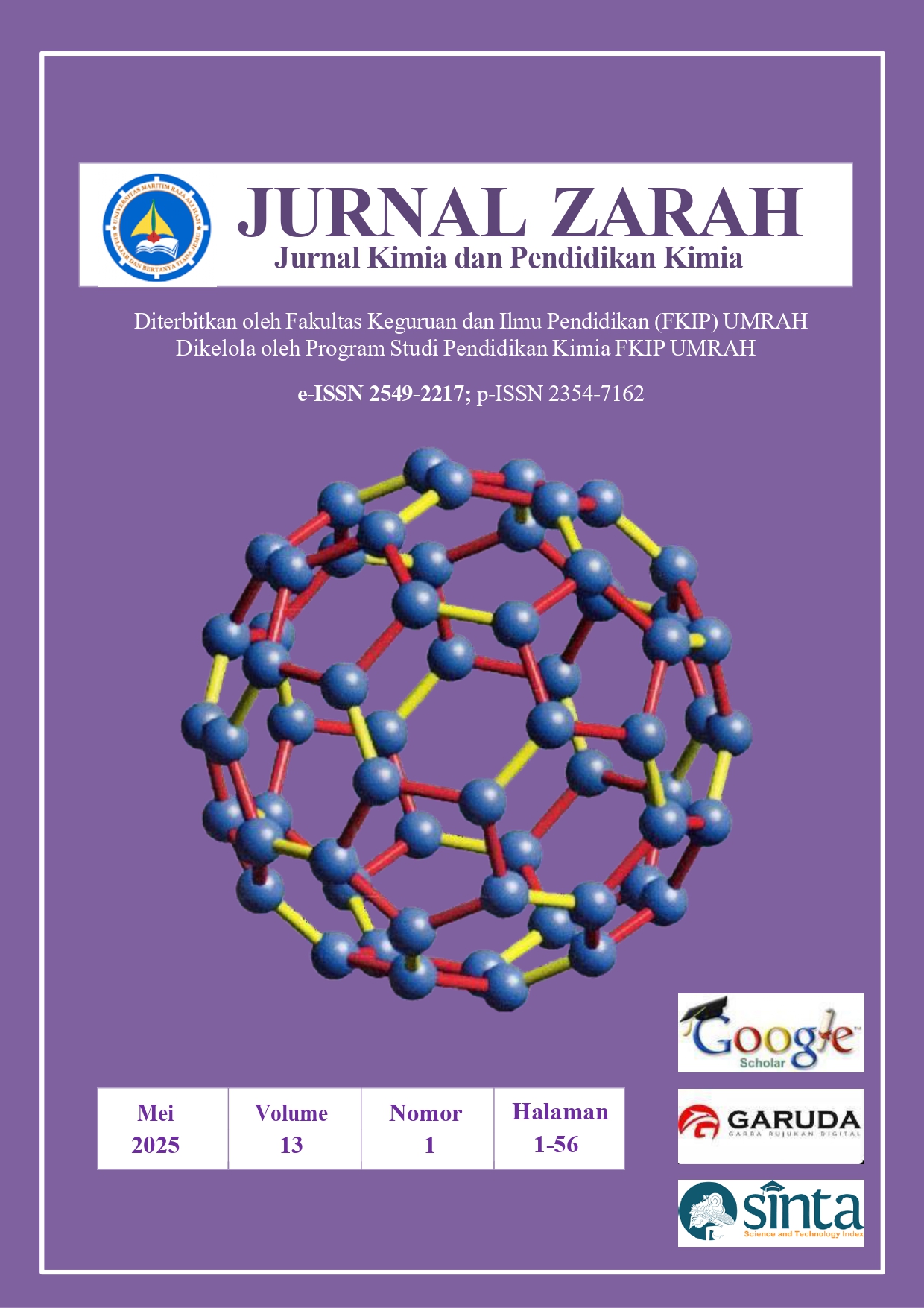STUDI EKSPERIMENTAL PEMANFAATAN CuO/ZEOLIT UNTUK DEGRADASI AIR GAMBUT MENGGUNAKAN METODE OZONOLISIS DAN PENGARUH TERHADAP KADAR BESI
Keywords:
Peat water, degradation, CuO/Zeolite, ozonolysisAbstract
Peat water is surface water that is generally found in peatland areas and is mostly found in lowlands. Peat water has a low pH (3-5), is brownish-red in color, and contains many organic and inorganic substances. The more intense color of peat water indicates a higher content of chemical compounds. High levels of Fe metal in peat water can disrupt the peat swamp ecosystem itself, such as disrupting the activity of decomposer microorganisms, disrupting plant growth, and causing toxicity to humans and other living things if they consume it. This makes it not meet the requirements of household water and sanitation that is suitable for consumption. This study aims to determine the effect of the use of CuO/Zeolite catalysts on the degradation of peat water by ozonolysis method on Fe levels. After the degradation process at optimum conditions, the Fe level became 0.19 mg/L and was already at the safe limit of the quality standard used. Based on these data, the decrease in Fe metal concentration as well as BOD, COD, Nitrate, Nitrite, and TSS values in peat water by ozonolysis is more effective with the addition of CuO/Zeolite catalysts at optimum conditions.
Downloads
References
Abdi, C., & Khair, R. (2017). Effect Of Ozonation In Decreasing Color Intensity And Level Of Iron (Fe) In Peat Water.
Aulian Barry, D. (2023). Analisis Besi (Fe) Terlarut Dalam Air Tanah Pada Lahan Gambut Dengan Sekat Kanal. jurnal sains pertanian equator, 813.
Fiolida, i. (2016). Preparasi Dan Karakterisasi Komposit Cuo-Zeolit Alam Untuk Fotodegradasi Zat Warna Rhodamin B Dengan Sinar Ultraviolet. yogyakarta.
Fisal, M., & Atmaja, D. (2019). kualitas air pada sumber mata air di pura taman desa sanggalangit sebagai sumber air minum berbasis metode storet. jurnal pendidikan geografi undhiksha, 2.
Gita, B. (2017). Degradasi Zat Warna Malachite Green Secara Ozonolisis dengan Penambahan Katalis TiO2- Anatase dan ZnO.
Hidayat, A., & Sutarno, D. (2019). Sintesis katalis Cuo-Zeolit alam untuk reaksi reduksi gas NO2 menggunakan reduktor senyawa hidrokarbon.
Khair, R. (2016). Effect Of Ozone And Activated Sand Zeolit Filter Media To Remove The Colour Intensity Of Peat Water With Forced Circulation;.
Putro, D., & Santoso. (2023). Perancangan Sistem Pengolahan Air Gambut Untuk Meningkatkan Ketersediaan Air Bersih.
Rahmi, A. (2022). analisis kualitas air gambut dengan metode penyaringan sederhana. 14-20.
Selvina, M., & Fahrialam, A. (2021). Study Characteristics of Zeolite in Yogyakarta and Its Utilization as a Builder Agent to Produce Environmentally Friendly Detergent. Jurnal geologi dan sumberdaya mineral, 189-196.
Suherman, D., & Sunawijaya, N. (2013). menghilangkan warna dan zat organik air gambut dengan metode koagulasi-Flokulasi suasana basa. Jurnal Riset Geologi dan Pertambangan , 125.
Suryani, M., & Paramita, A. (n.d.). Analisis Penentuan Kadar Besi (Fe) Dalam Air Limbah Tambang Batu Bara Menggunakan Spektrofotometer UV-Vis.
Zilfa, & Safni. (2021). Penggunaan ZnO/Zeolit Sebagai Katalis Dalam Degradasi Tartrazin Secara Ozonolisis. Jurnal riset kimia, 53-64.
Zilfa, & Septiani, U. (2020). Pengaruh HCl terhadap aktivitas seolit alam clipnotilolit-Ca pada penyerapan Pb(II) . jurnal riset kimia, 80-88.
Zilfa, & Yusuf, Y. (2022). Pemanfaatan TiO2/Zeolit Alam Sebagai Pendegradasi Pestisida (Permetrin) Secara Ozonolisis. Jurnal riset kimia.
Downloads
Published
Issue
Section
License
Copyright (c) 2025 Jurnal Zarah

This work is licensed under a Creative Commons Attribution-NonCommercial-ShareAlike 4.0 International License.


